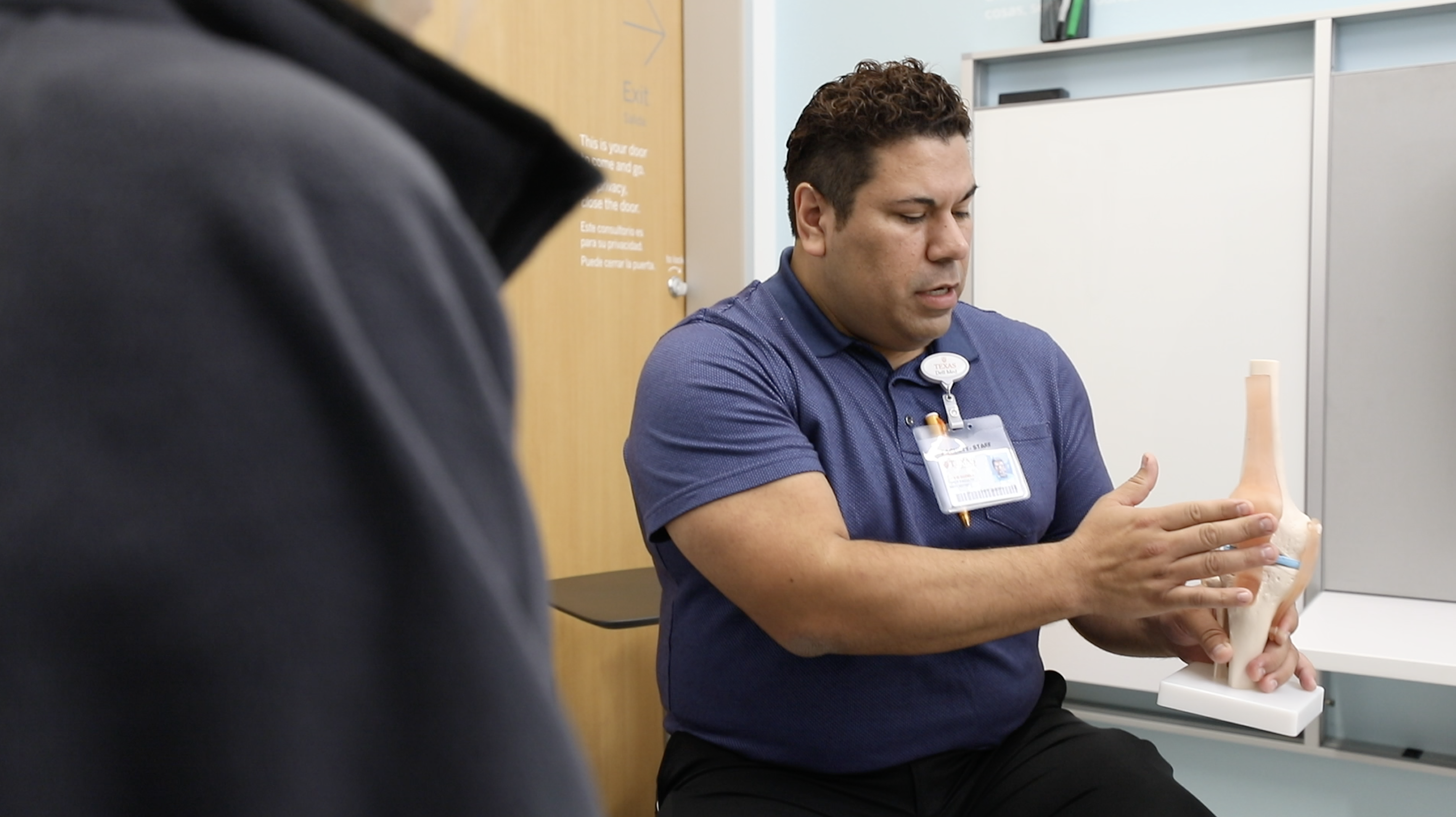UT Health Austin sports medicine physician addresses common misconceptions surrounding sports injuries and recovery approaches
It’s no secret that regular physical activity brings numerous health benefits to people of all ages; however, this can also lead to accidental sports injuries, some of which can become complicated to treat. There are many myths regarding sports-related injuries and recovery methods that often result in either the incorrect treatment of an injury or the overlooking of a more serious problem.
If you get a sports injury while participating in a physical activity, it’s best to receive care under the guidance of a trained sports medicine specialist for the safest and quickest route to recovery. UT Health Austin board-certified family medicine specialist and fellowship-trained sports medicine specialist J. Mica Guzman, Jr., MD regularly works with patients to break down misconceptions related to injuries and how best to treat them based on false information circulating on the internet or acquired from other illegitimate sources.
While there is a sea of misinformation out there, not all information about how to treat sports-related injuries is false. Oftentimes, you can safely treat a minor injury at home with over-the-counter treatment methods. Identifying which sources of information are credible can help you make the most informed decision about your health.
Dr. Guzman breaks down common myths he encounters when treating patients in UT Health Austin’s Sports and Injury Clinic within the Musculoskeletal Institute.
 Myth #1: Applying heat to an acute injury.
Myth #1: Applying heat to an acute injury.
The use of heat in treating a newly sustained acute injury can increase circulation to the area, which may result in increased swelling and inflammation. This can slow down the healing process and add to the throbbing pain you may be experiencing. If you sustain an injury during physical activity, in most cases, the safest and most effective course of action is to apply ice or cold therapy to the affected area.
Myth #2: Rest is always best.
Certainly, immediately after an injury, you should stop participating in your activity and rest. Working through the pain or ignoring an injury can worsen damage and prolong your recovery process. Although rest is an important aspect of recovery, depending on the type of injury you have, gentle movement or activity modification can help bring fresh blood flow to the area, delivering oxygen and nutrients that aid in the healing process. The key is to keep movement gentle, slow, and as pain-free as possible. Additionally, opting for an exercise that does not put pressure on the injured area, can help keep the rest of your body fit and strong.
Myth #3: If you can move it, it must not be broken.
“This is a pretty common misconception that people have,” explains Dr. Guzman. “Depending on where a break or fracture occurs, your ability to move the area may not be severely affected. Small breaks or fractures in the outer bones of the lower leg, in the elbow or arm, and in the feet or toes are often improperly self-diagnosed as less serious injuries because people tend to still have movement and may not always experience intense pain or severe swelling.”
Both breaks and fractures can occur from trauma, such as a fall or direct impact to a bone. Fractures can also occur from overuse, or repetitive impact to an area, which may be a sign of poor bone health. Symptoms of a break or fracture can include persistent pain, swelling, tenderness, or bruising. If you are experiencing these symptoms, it’s important to get professional help to ensure the bones are properly aligned and held in place while they heal to avoid infection or permanent deformity.
Myth #4: You can run through shin splints and they will go away.
Media tibial stress syndrome (MTSS), also referred to as shin pain, is one of the most common running injuries and is often caused by overuse of the muscles in the lower leg as a result of overtraining, poor gait function, or a combination of both. The area around the shins in the lower legs becomes inflamed and can be very painful, but will eventually go away with enough rest. Continuing to run on painful shins can lead to shin splints, or small fractures in the bone, which is a more serious condition and will prolong your ability to participate in your activity of choice.
Myth #5: Surgery is your only option.
Surgery is invasive and your care team at UT Health Austin will likely want to explore alternative options before making a recommendation for surgery. Depending on the extent of your injury, physical therapy and other forms of rehabilitation have proven to be just as effective, if not more so, in healing your body than surgery. While full ruptures and certain types of fractures may require a surgical operation, there are many other types of injuries, including partial tears and minor degeneration, that often heal on their own or can be treated non-surgically with the appropriate therapy regimen.
“Here at UT Health Austin, our initial treatment recommendation is typically not surgical and does not involve an invasive procedure,” says Dr. Guzman.
Recovering from an injury involves more than just resting. It requires implementation of activity modifications, re-education on training, and, oftentimes, re-training on proper form and movement. To reach maximum recovery and to prevent future injuries, reach out to a healthcare professional. Don’t fall victim to common myths and trust your clinicians to help you get back in the game.
The Sports and Injury Clinic care team delivers a holistic approach to treating injuries, which includes designing a treatment plan around safe recovery and “return-to-play” that is specific to each patient’s goals and activity.
To learn more about UT Health Austin’s Sports and Injury Clinic or to make an appointment, call 1-833-UT-CARES (1-833-882-2737) or visit here.










